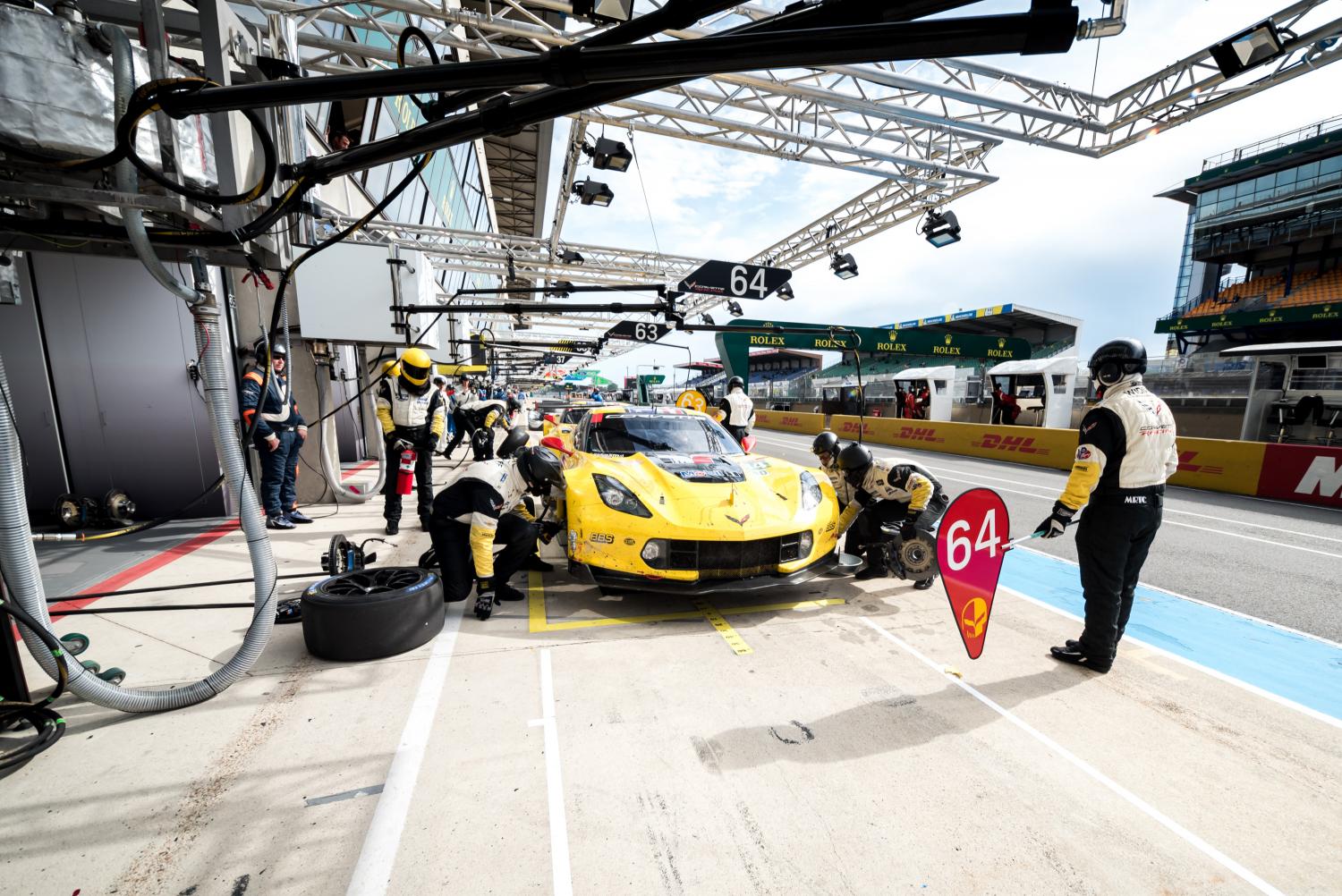It goes without saying that to be in with a hope of finishing, it will be necessary to refuel and change tyres at some point during the 5,000-odd kilometres covered in the race. And of course, any number of incidents can occur on track.
Pit stops and refuelling
Drivers must not exceed 60 kph in the pitlane, and must stop in front of their garage with the engine turned off before any intervention. The mechanics may change wheels and refuel at the same time, but they may not carry out repairs other than minor interventions, such as changing a bonnet, in the pit lane. Only four mechanics are permitted to work on the car in the pitlane. Otherwise, the car must be pushed into its garage, where the entire team can work on the car. However, it is forbidden to change the engine, chassis or gearbox during the race.
Did you know? There is a specific tyre allocation per class, applicable both during practice sessions and the race, except for wet-track tyres. Competitors thus have to manage their tyre allocation carefully and drivers have to go easy over the rumble strips to avoid punctures!
Neutralising the race
If something happens on track, Race Control has a number of options, depending on the severity and consequences of the incident.
If it is a minor incident, such as a broken-down car that is not a danger to other competitors, the Race Director can introduce a SLOW ZONE: speed is limited to 80 kph and it is forbidden to overtake in the affected zone, but the race continues as normal on other parts of the track.
Did you know? The Circuit des 24 Heures du Mans is divided into 35 zones, each 300 to 500 metres long.
This is new for this year. The complete track is subject to a yellow flag so it is forbidden to overtake and speed is limited to 80 kph. However, the safety cars are not brought out. This procedure is particularly useful when the marshals need to clear debris from the track.
Did you know? Access to the pitlane is closed during a FCY. In theory, therefore, competitors cannot refuel. However, to prevent cars from running out of fuel, they are permitted to make a five-second refuelling stop and will then be required to return to the pitlane as soon as the FCY procedure ends. Likewise, in the event of a puncture, competitors can change the damaged tyre(s) but must return to the pitlane as soon as the green flag is waved.
Given the length of the circuit, there are three safety cars positioned around the track, ready to intervene when a Slow Zone cannot be implemented. Drivers must line up behind the first safety car they encounter and it is absolutely forbidden to overtake another competitor or the safety car itself.
Did you know? As soon as the safety cars enter the track, the pitlane light switches to red. Until now, any competitors in the pitlane before the start of the safety car period and blocked by the red light had to wait until the three safety cars and all the cars on the track had gone past before the light turned green. Now, however, if the light is green, they may return to the track before Safety Car 2 arrives.
Photos: The safety car out on the track as the cars enter a Slow Zone during Test Day.
Classification
For a car to be included in the classification, it must:
- cross the finish line on the race track when the chequered flag is shown, except in a case of force majeure at the Stewards’ discretion;
- have covered at least 70% of the distance covered by the car classified in first place in the overall classification.
- when 75 % of the time of the race has elapsed: at least 50 % of the distance achieved by the car leading the race, under pain of exclusion;
- complete the last lap in a maximum 6 minutes (start/finish line-start/finish line or pit exit loop–start/finish line), except in case of force majeure at the Stewards’ discretion. To prevent history repeating itself after Toyota’s huge disappointment in 2016, a penalty is now applied if the specified time is exceeded. Kazuki Nakajima was leading the race in the TS050 Hybrid when his car broke down on the final lap. It was not classified even though it managed to cross the finish line, because it had exceeded the maximum lap time.
- It is forbidden to stop on the track to wait for the chequered flag to be shown.
Did you know? Since 2012, the 24 Hours of Le Mans is part of the FIA World Endurance Championship (FIA WEC), with a specific number of points awarded to reflect the length of the race.
Take note: The 2018-19 WEC Super Season, which included two visits to the French endurance classic, comes to a close with the 2019 24 Hours of Le Mans.
Our first instalment: the Cars
Our second instalment: the Drivers
Cover photo: Mechanics hard at work on the #64 Corvette C7.R during a refuelling pit stop on Test Day.



